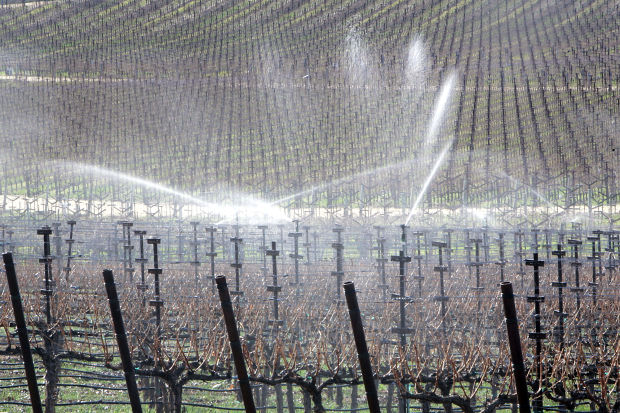Governor Brown's plan received immediate criticism for focusing on residential cutbacks only.
A look at the numbers for the state's water usage:
- 50% of water goes to what's called environmental needs. This is things like protecting fish waterways and scenic rivers. Getting use of this water would require changes in state and federal laws.
- 40% of the state's water is for agriculture. About a third of this goes to fruits and nuts--almonds, table grapes, wine grapes, etc. There are about two dozen fruits, nuts, and vegetables that are grown almost exclusively in California.
- That leaves 10% for residential water use and the governor wants a 25% reduction. Some areas have already reduced their usage by about 20% so they don't have far to go. The desert city of Palm Springs with its golf courses, swimming pools, and expansive lawns uses seven times as much water per person compared to San Francisco where there are few lawns and even fewer pools. The large population centers of the L.A. basin and the S.F. Bay Area import their water from other parts of the state.
 | |
| Wasting water. Overhead watering of vineyards in Yountville during the dry winter. Image from napavalleyregister.com |
Water usage for wine grapes:
- Irrigation needs depend on where in the state the grapes are planted as the annual rainfall is higher in some areas and almost non-existent in others. The soil type of the vineyards matters, too. Wine grapes are drought tolerant, but not drought resistant. Vineyards can often be dry farmed depending on where they are planted and if the grower decides to go that way. Drip irrigation is pretty much standard in West Coast vineyards. Dry farming probably means a smaller harvest (fewer tons of grapes per acre of vineyards).
- Frost protection in the spring is often done with water, but that practice will be diminishing with the drought as other methods are available.
- In the wine cellar water is used primarily for cleaning barrels and equipment. There are other ways to do some of the work without water.
 | |
| Cleaning the production area during the grape harvest Image from romingerwestwinery.wordpress.com |
There are various numbers thrown around, but figure something like 15 gallons of water go into making a glass of California wine though it can be much lower if the vines are dry farmed. BTW, it's estimated that a cup of coffee takes 37 gallons of water to produce.
California's North Coast
Although the entire state will be under the same water restrictions the North Coast (Napa, Sonoma, Mendocino, and farther north) has a good supply of water--this year.
References
Water Use
City water use
No comments:
Post a Comment